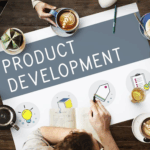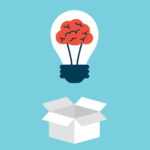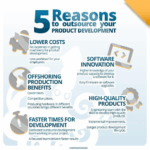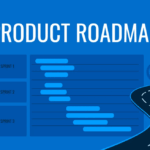Have you ever seen a product fail miserably? It’s not just about the loss of money but also wasted time, effort, and morale. When entrepreneurs develop new products, they aim to solve real-world problems. But why do we see that some ideas succeed spectacularly while others struggle to gain traction?
But why does this happen?
Several researchers claim that 70% of startups fail because they either launch products too early or too late. The secret to a successful product lies in identifying the right opportunities at the right time. Usually, businesses that fail to understand their market and can’t judge their best timings for product launch often face the flop!
So, if you are an entrepreneur planning to launch your product, let us help you spot the best opportunities to develop new products. With this guide, you can understand market needs and learn how to transform your ideas into products that rule the world.
Identifying Market Gaps: The First Step to Successful Product Development
Every great product begins with the right idea, and the process of product development starts by identifying market gaps. If you can find what’s missing or under-served in the market, you’ve got your chance to stand out.
Here’s how to begin:
1. Research the Market to Find Unmet Needs
Market research is your foundation. Study industry trends, analyze customer feedback, and look for areas where existing products fall short. This will help you identify untapped opportunities.
For example, a survey showed that 70% of consumers feel there aren’t enough sustainable product options available. When entrepreneurs develop new products based on insights like these, they can carve out a unique space for themselves.
2. Listen to Customers: Their Pain Points Hold the Answers
Customers often know precisely what they need, even if they don’t say it directly. Surveys, interviews, and social media conversations can uncover valuable insights about their challenges. Don’t assume you already know what they want—ask and listen.
A great example is Slack. It started as a tool to solve internal communication problems for a team and ended up becoming a global phenomenon because it addressed common pain points.
3. Analyze Competitors to Find Opportunities to Stand Out
Take a close look at your competitors. What are they doing well? More importantly, where are they falling short? This analysis can reveal gaps you can fill.
Think about Uber. By solving inefficiencies in traditional taxi services, they created a seamless, user-friendly experience that disrupted the entire transportation industry.
Timing and Innovation: Two Sides of the Same Coin
Innovation is crucial when creating a product, but timing can make or break its success. When entrepreneurs develop new products, launching at the right moment is key. Act too soon, and the market might not be ready; act too late, and someone else might beat you to it.
Stay Open to Innovation
Successful entrepreneurs are always looking for ways to improve what’s already out there. Even if a product is doing well, staying innovative can help you maintain an edge over competitors.
Apple is an excellent example. Each iPhone release didn’t just add new features—it often redefined how people communicate and work, keeping customers loyal.
Emerging trends also present opportunities. For instance, augmented reality (AR) is becoming a game-changer in e-commerce. Businesses that adopt AR early can offer immersive shopping experiences and stand out as innovators.
Launch When the Market Is Ready
Timing is everything. Pay attention to industry trends, technological advancements, and customer demand. For example, Uber India launched a bus service in 2024 to address the growing demand for affordable long-distance travel. They saw the need and acted quickly.
At the same time, ensure your business is ready internally. If your resources, infrastructure, or expertise aren’t in place, it’s better to wait until you’re prepared to deliver a quality product.
A Step-by-Step Guide to the Product Development Process
When entrepreneurs develop new products, following a structured process can make all the difference. Want to know every nitty-gritty of the process?
Here’s a step-by-step breakdown:
-
Idea Generation: Many successful products, like Dropbox, began as solutions to problems faced by their creators. Start the process with brainstorming. Look at market trends, customer needs, and competitor analysis to generate ideas.
According to a study by CB Insights, 42% of startups fail because they address a market need that doesn’t exist. So, entrepreneurs must evaluate their products on their feasibility and market potential.
-
Concept Development and Testing: Companies like Tesla test their concepts with prototypes and early adopters to perfect the product. Tesla’s Model “S” had feedback loops from early customers.
This feedback shaped its development and made the product successful. Turn your top ideas into detailed concepts and get feedback from potential users. Their feedback will help you refine your product.
-
Market Research: During market research, brands often look at competitors. Compare your concept with existing products. Look for any loose edge and refine your strategy to address the needs of your target audience.
-
Prototyping: Before launching, many companies build MVPs. Dropbox began by sharing a simple demo video to gauge interest, leading to early sign-ups. Build a prototype or minimum viable product (MVP) to test functionality and usability.
-
Product Development: Are you familiar with GoPro, which underwent several design iterations before settling on a rugged, portable camera that could be mounted on gear? The process of developing a tangible product is always backed by hard work and determination.
Finalizing your design, setting up manufacturing processes, and ensuring quality control help businesses in successful product launches. The product development process for GoPro contributed to it becoming a leader in action cameras with sales over $1 billion annually.
-
Testing and Validation: Testing your product thoroughly before launching ensures it meets quality standards. Even big brands do perform testing that validates their products. For instance, in this phase, Google performs extensive A/B testing. When they developed Google Maps, they tested the product with users before finalizing the features.
-
Launch: Bring your product to market with a strong marketing plan. Let’s take Coca-Cola’s rebranding of Diet Coke in the 2000s. The launch was focused on targeting younger demographics. As a result, the product saw a 20% increase in sales within the first quarter of launch.
A successful launch strategy is essential. It allows you to keep an eye on customer feedback and make adjustments as needed.
Remember, product development doesn’t end at launch. Continue gathering feedback and updating your product to keep it relevant.
Avoiding Common Mistakes in Product Development
Developing a new product is exciting, but it’s easy to make mistakes along the way. Here are a few pitfalls to watch out for:
- Skipping Market Research: If you don’t understand your audience, your product might miss the mark. Invest time in thorough research.
- Ignoring Competitors: Staying unaware of what your competitors are doing can lead to missed opportunities. Continuously monitor industry trends.
- Underestimating Resources: Don’t rush into development without ensuring you have the resources, time, and team to execute your idea correctly.
Final Thoughts: Turning Ideas into Impact
Product development is a challenging yet rewarding journey. By spotting opportunities, listening to your audience, and timing your launch right, you can turn innovative ideas into impactful solutions. Remember, when entrepreneurs develop new products, they aren’t just creating something to sell but solving problems, making lives better, and shaping the future.
Continue Discovering with Brand New MD’s Newest Topics
Looking for more? Explore these fascinating reads from Brand New MD:









